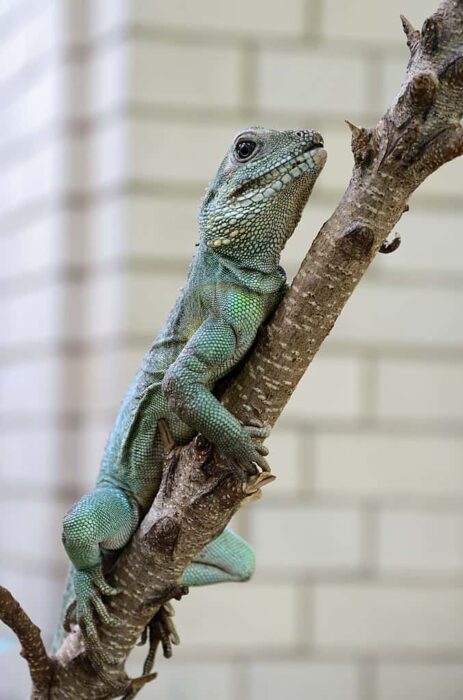Table of Contents
How Long Do Water Dragons Live?
It is natural to want to know how long water dragons live for if you are considering getting one of these reptiles and keeping it as a pet. After all, most people know that cats and dogs can live for quite some time, but is it the same for this species of reptile?
In their natural habitat, water dragons can live for between ten and fifteen years. However, those that are cared for correctly in captivity can live as long as twenty years, so you should be prepared for a long-term commitment if considering such a pet.
If you are in it for the long-haul, then there may be many other questions you will want answered. If you are a new water dragon owner , you may already have a number of questions at the ready regarding the behaviors of your pet. Read on and we will try to answer some of these.
, you may already have a number of questions at the ready regarding the behaviors of your pet. Read on and we will try to answer some of these.
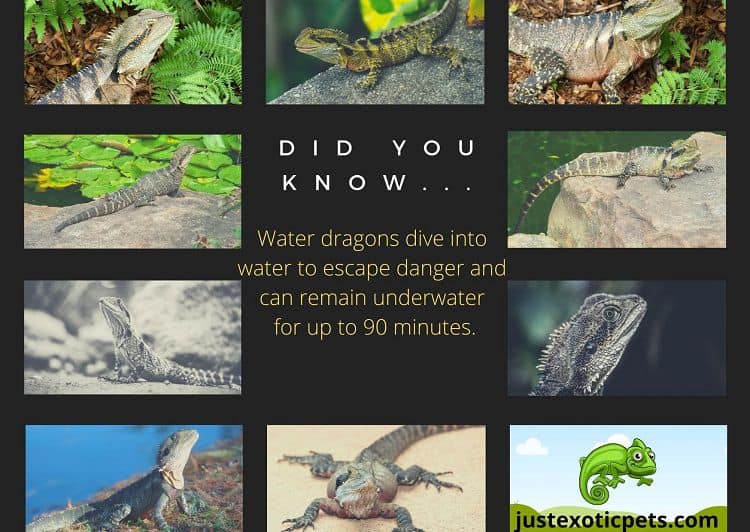
Why is My Water Dragon Sleeping So Much?
A frequent question is if it is natural for water dragons to sleep a lot. In actual fact, water dragons are actually very active and should not be sleeping most of the day. There are, however, a number of reasons why this might be happening.
to sleep a lot. In actual fact, water dragons are actually very active and should not be sleeping most of the day. There are, however, a number of reasons why this might be happening.
The first of these might be that your water dragon is feeling stressed about its new surroundings. If you have recently brought your new reptile home, it will need a bit of time to adjust and get used to its new environment. You might also notice that the water dragon is not eating and is trying to hide from you. A good way to help the animal acclimatize is to cover three sides of the vivarium with a cloth or something similar and gradually remove one side at a time until it gets used to where it is.
Temperatures can also affect the behavior of water dragons. Like other reptiles, water dragons require specific temperatures in order to thrive. The temperature of their water should be between 80F and 85F. You need to make sure the tank temperature is the same, but the dragons require a basking temperature that is higher than this (around 95F). Try to incorporate a nighttime temperature of about 70F to 77F. If the temperatures in your tank are higher or lower than these, it could result in your water dragon becoming lethargic due to low energy. It may also cause muscle weakness, which would make it incapable of moving and hence make it look as though it is sleeping all the time.
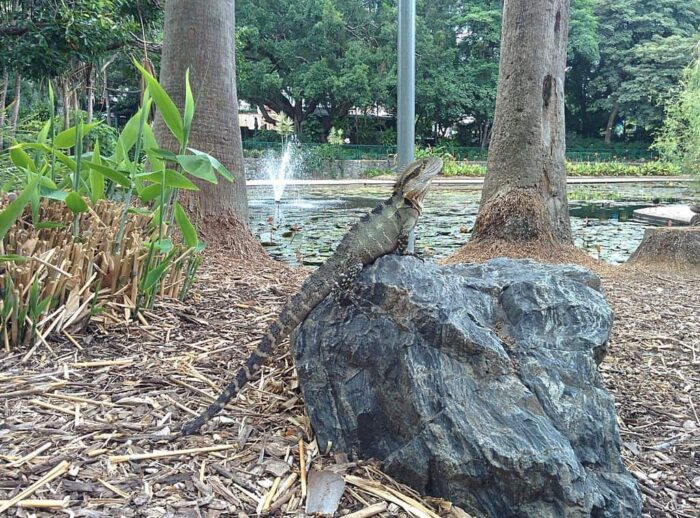
Basking Australian Water Dragon (Intellagama lesueurii) 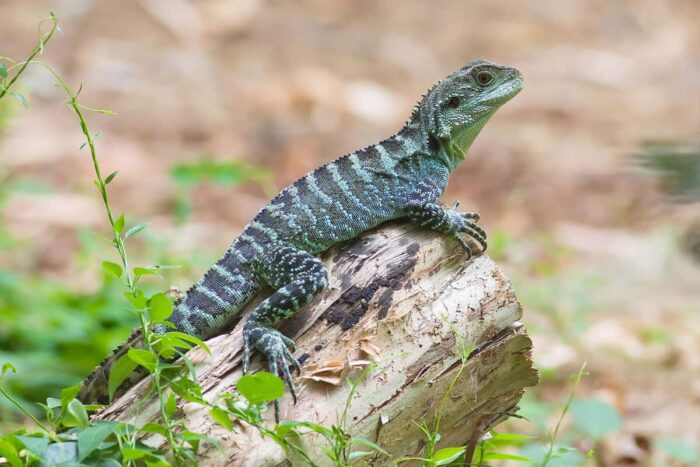
Gippsland Water Dragon (Physignathus lesueurii howittii)
Why is My Water Dragon Not Moving?
A water dragon might not be moving because of incorrect temperatures within its vivarium. Too cold and it will lack energy; too warm and the reptile could be affected by weak muscles. However, there could be other reasons the dragon is not moving.
While temperature levels are important, so too is humidity. You should try to keep humidity levels to around 75-80%. Water dragons like their enclosures to be quite humid and may become stressed if the levels drop too much. If this happens, they are likely to spend much of their day in the cooler part of their enclosure and will not bask, which will in turn zap their energy levels and cause them to lose their appetite.
Sickness can also be the cause of a water dragon not moving. If yours is not moving and also not eating, you should look out for other signs of illness including weight loss and muscle weakness.
Without sufficient vitamin and mineral intake, reptiles such as water dragons are prone to metabolic bone disease. They require vitamins such as D3 and calcium to thrive and be healthy. They generally get their D3 from UV lighting; the D3 is then used to metabolize calcium for strong and healthy bones. It is vital therefore that you provide sufficient UVB lighting and that you are giving your dragon supplements with its food.
Other signs of sickness include sunken eyes, bubbly mucus around the nose and eyes, vomiting, and unusual poop. If you notice any of these signs, it is best to take your pet to an exotic vet for treatment.
Age and stress can also affect the movement of a water dragon, as can being gravid (carrying eggs). Water dragons that are two years or older can lay eggs even if they have not mated. Those that are gravid may move around a lot less and might even stop eating for a bit.
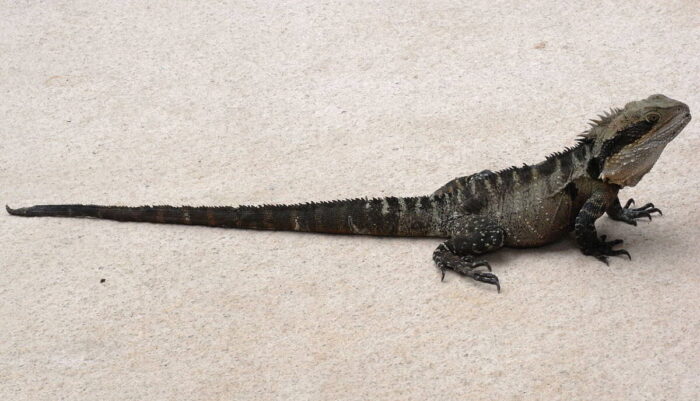
Why is My Water Dragon Twitching?
If you notice that your water dragon is twitching, it could be an indication of metabolic bone disease. MBD is quite common in lizards and can often be from a deficiency in various vitamins and minerals or inadequate UVB lighting. Signs of MBD include twitching as well as lethargy, muscle spasms, fractured bones, or swelling of the legs.
It is best to take your water dragon to an experienced exotic vet as soon as you notice any twitching as it is at this point that it will have the best chance of recovery and reversal of the condition.
Why Did My Water Dragon Die?
Unfortunately, water dragons do not always recover when they get ill. Early intervention is the best way to give yours a chance at recovery if it does get sick, so it is important to look out for the signs of illness and act promptly.
Illness can result in the death of a water dragon, but stress can also be a major factor. If you are new to water dragon keeping, it is vital that you do as much research as possible and make sure that you get the correct equipment, including UVB lighting to provides adequate light for your pet. Take care to buy food from reputable sources so as to avoid parasites and try not to handle or move your reptile about too much in the first few days.
If you are concerned for the health or wellbeing of your water dragon, always seek advice from a qualified exotic vet.
Photo Credits:
- Featured Image (Chinese Water Dragon): Alvesgaspar
 – This file is licensed under the Creative Commons
– This file is licensed under the Creative Commons Attribution-Share Alike 4.0 International
Attribution-Share Alike 4.0 International license.
license. - Basking Australian Water Dragon: MusikAnimal
 – This file is licensed under the Creative Commons
– This file is licensed under the Creative Commons Attribu
Attribu tion-Share Alike 4.0 International license.
tion-Share Alike 4.0 International license. - Gippsland Water Dragon: JJ Harrison
 (https://www.jjharrison.com.au/
(https://www.jjharrison.com.au/ ) – This file is licensed under the Creative Commons
) – This file is licensed under the Creative Commons Attribution-Share Alike 3.0 Unported
Attribution-Share Alike 3.0 Unported license.
license. - Eastern Water Dragon: Quartl
 – This file is licensed under the Creative Commons
– This file is licensed under the Creative Commons Attribution-Share Alike 3.0 Unported
Attribution-Share Alike 3.0 Unported license.
license.

